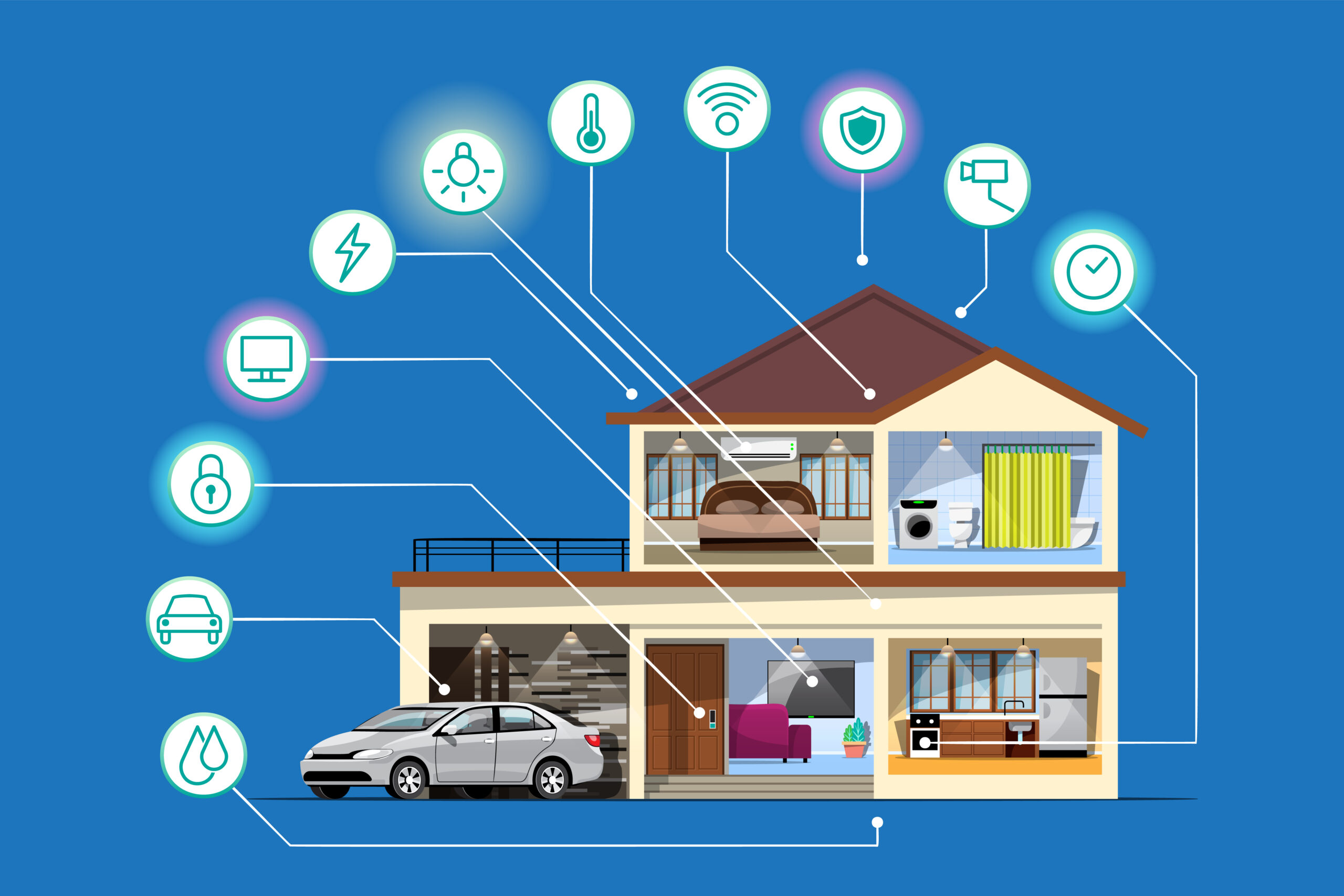NFC (Near Field Communication) tags are becoming an essential tool for enhancing the convenience and efficiency of smart home automation. By allowing homeowners to automate and control various aspects of their smart homes with a simple tap, NFC tags offer a seamless and user-friendly experience. Here’s how NFC tags can simplify and enhance smart home automation:
1. Customized Actions
NFC tags can be programmed to trigger specific actions or commands when tapped with an NFC-enabled device, such as a smartphone or tablet. This functionality allows homeowners to customize and control their smart home devices and systems according to their preferences. For example, an NFC tag placed by the front door could be programmed to turn on lights, adjust the thermostat, and play music when tapped. This level of customization means that homeowners can create personalized experiences for different activities and routines.
2. Simple Setup
Setting up NFC tags for smart home automation is straightforward and requires minimal technical knowledge. Most smartphones come with built-in NFC programming capabilities, or users can download NFC programming apps to write instructions or actions to the tags. This ease of setup makes NFC tags accessible to a wide range of users, allowing them to enhance their smart home experience without needing extensive technical skills.
3. Multi-Purpose Functionality
NFC tags can be placed strategically throughout the home to perform a variety of functions. For example, a tag in the bedroom could be programmed to turn off all lights, lower the blinds, and set an alarm when tapped before going to bed. In the kitchen, a tag could be set up to start brewing coffee, turn on the lights, and play morning news updates. The versatility of NFC tags means they can be used to simplify daily routines and enhance the functionality of a smart home.
4. Personalized Profiles
NFC tags can be used to create personalized profiles or scenes for different household members. Each person could have their own NFC tag that triggers specific settings or preferences when tapped, such as adjusting the lighting, temperature, and entertainment options to their liking. This feature is particularly useful in households with multiple occupants who have different preferences for how their environment should be configured.
5. Enhanced Security
NFC tags can also be used to enhance security in smart homes. Homeowners can place NFC tags near doors or windows and program them to arm or disarm security systems, lock or unlock doors, or send alerts to mobile devices when tapped. This adds an extra layer of security and convenience, allowing homeowners to manage their smart home security systems with a simple tap.
6. Voice Command Integration
NFC tags can complement voice control systems like Amazon Alexa or Google Assistant by providing an additional method of interaction. While voice commands are useful, there are situations where NFC tags can be more convenient or precise. For example, an NFC tag could be placed near the bed to activate a “good night” routine that turns off all lights, locks the doors, and lowers the thermostat, without needing to speak a command.
7. Guest Access
NFC tags offer a convenient way to provide temporary access or limited functionality to guests or service providers. For example, a guest NFC tag could be programmed to temporarily disable security systems, adjust lighting and temperature settings, and provide access to entertainment options during their stay. This makes it easy for homeowners to manage guest access without compromising security or convenience.
8. Energy Efficiency
NFC tags can contribute to energy efficiency by allowing homeowners to easily manage and automate lighting, heating, and cooling systems based on occupancy or time of day. For instance, an NFC tag placed near a light switch could be programmed to turn off all lights and adjust the thermostat when tapped before leaving a room. This helps reduce energy consumption and ensures that smart home devices are only active when needed.
9. Remote Control
NFC tags can also be used for remote control of smart home devices and systems. Homeowners can program NFC tags with specific instructions or actions and share them with family members or trusted individuals who may need to access or control the smart home remotely. This allows for convenient management of the smart home even when the homeowner is not physically present.
Conclusion
NFC tags offer a convenient and versatile solution for simplifying automation and control in smart homes. With their ability to trigger customized actions, provide enhanced security, and contribute to energy efficiency, NFC tags provide homeowners with greater flexibility, personalization, and ease of use in managing their smart home devices and systems. As smart home technology continues to evolve, NFC tags are likely to play an increasingly important role in creating more intuitive and user-friendly home automation experiences.
4o
